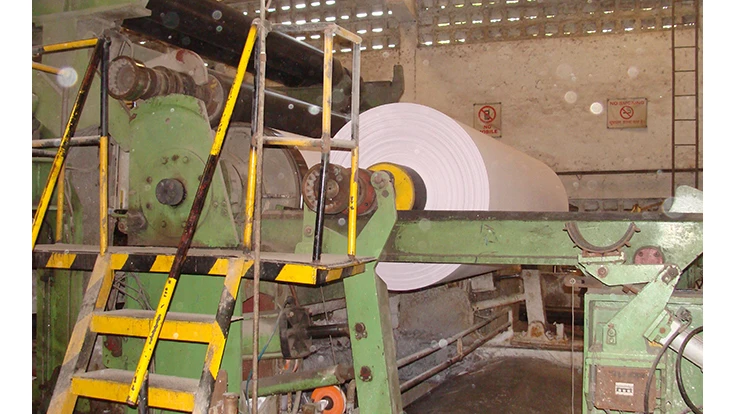
In the first quarter of 2017, skyrocketing recovered fibre costs and higher ocean-going container shipping rates have been delivering a painful one-two punch to India’s paper manufacturers. While delegates to the 2017 Paper Recycling Conference India, held in Mumbai in early February, commented on the dire circumstances, they also heard forecasts pointing to overall expansion in their industry sector.
As India’s GDP has been rising and its middle class has been growing, it is consuming more finished paper, commented Ashok Kumar of Mumbai-based Pudumjee Paper Products. Kumar said India consumed 15.3 million tonnes of finished paper in 2016, up by 37.8% from the 11.1 million tonnes consumed in 2010. A forecast cited by Kumar envisions another 50.3% jump between now and 2025, when 23.0 million tonnes of consumption is predicted.
Kumar said India currently relies on recovered fibre for 47% of its mill feedstock, and if that is the case in 2025 it will consume from 15 million to 16 million tonnes per year of recovered paper.
The difficulty for recovered fibre-fed mills currently are high prices, said Kumar. He said “in the last two years, wood pulp produced in India is coming in at a lower price” than such grades as sorted office paper (SOP) and coated book stock (CBS).
Kumar said that makers of specialty papers and tissue in India who rely on recovered fibre are likely to face restricted profit margins “for the next 10 years or so” if scrap paper prices remain high.
Despite these challenges, Pawan Agarwal of Kashipur, India-based Naini Papers Ltd. referred to scrap paper as “the fibre of the future” in India.
Agarwal said recovered fibre comprised about 20% of India’s paper mill feedstock in 1990, a figure that could climb as high as 65% by 2025. Much of this growth has come at the expense of agro-fibres such as sugar cane bagasse, which is shrinking from 35% of the market in 1990 to a projected 10% in 2025.
Agro-fibres are being phased out not for pricing reasons, said Kumar, but because of competition for the material from the power generation sector and scrutiny of paper mill emissions at agro-fibre based mills.
The virgin wood-based pulp market in India also faces restrictions, said Agarwal, in the form limited land on which to maintain managed forests and logistical challenges in moving logs, wood chips or pulp via India’s underdeveloped road network.
Agarwal said some hurdles in the recovered fibre sector in India would best be cleared by investments in modern baling and warehousing facilities. He also commented on the need for India’s mill sector to invest in upgraded pulping, screening and deinking technology to handle increasingly commingled imported scrap paper shipments. “Are we equipped to handle these changing grades?” he asked delegates.
The 2017 Paper Recycling Conference India was 6 and 7 February at The Leela Hotel in Mumbai.
Latest from Recycling Today
- Aqua Metals secures $1.5M loan, reports operational strides
- AF&PA urges veto of NY bill
- Aluminum Association includes recycling among 2025 policy priorities
- AISI applauds waterways spending bill
- Lux Research questions hydrogen’s transportation role
- Sonoco selling thermoformed, flexible packaging business to Toppan for $1.8B
- ReMA offers Superfund informational reports
- Hyster-Yale commits to US production





